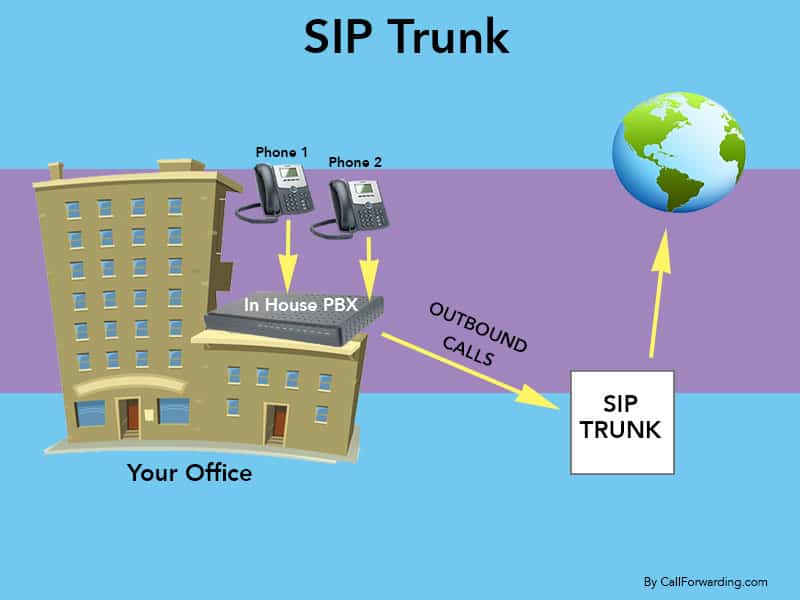

Scalability and call volume – the number of channels is configured at each end of the SIP trunk and additional SIP channels can be configured in minutes without the requirement for new hardware.Cost Savings – Whilst each provider have their own pricing structures, it is a widely accepted fact that SIP trunks over great savings on call rates versus traditional PSTN technologies, whilst also requiring no upfront capital expenditure.The benefits of SIP trunking over traditional telephony solutions include: Not only does SIP offer greater flexibility and call quality, but it also presents the benefits that can be found in the next section of the blog. With Fibre Broadband now offering speeds of up to 1Gbps, businesses have this assurance and peace of mind.Ī further reason is that SIP offers real-world benefits over legacy telephone lines. As SIP is dependent on an internet connection, businesses had to ensure their internet connection was capable of supporting the service. First of all, it is due to the fact that the internet has become quicker and more reliable. UC is also an effective method of providing small businesses with an enterprise-grade phone system. UC can deliver more than traditional phone calls and voice calls but the solution can be across multiple devices such as traditional handsets or applications on mobile devices, tablets or computers. Services will depend on PBX type and the UC platform. SIP trunking can also be used as part of a Unified Communication (UC) solution providing PSTN access to a UC offering that can support video calls, instant messaging and conferencing features. As SIP trunks are ‘virtual’ equivalents of traditional analogue or ISDN services and faults can be monitored and corrected by a sip trunk provider without the need for engineer visits and costly outages. A service provider will provide Sip trunking and can manage the number of concurrent calls and quality. VoIP and SIP work together to provide a solution for the setup and management of calling sessions across the internet. This is known as VoIP (Voice over Internet Protocol). SIP (session initiation protocol) is the technology that sets up, modifies and terminates real-time sessions. Think of a SIP trunk as the modern replacement of the old copper analogue lines or ISDN circuits that connected an in-house office PBX (Private Branch Exchange) with the PSTN (Public Switched Telephone Network).Ī SIP trunk provides greater flexibility and quality of service over existing or legacy phone lines. SIP trunking is essential for setting up communication sessions in the modern business communications world. It is a virtual connection and eradicates the need for any physical connection to a phone provider. SIP Trunking ExplainedĪ SIP trunk is the connection between an IP-PBX and an ISP (Internet Service Provider) and can use an existing internet connection, rather than requiring its own standalone internet line. SIP stands for Session Initiation Protocol and is the standard and widely used communications protocol for voice and video traffic in a Unified Communications system on a data network. In this blog, we will explain what are SIP Trunks and look at the reasons why they have become so popular.

This change has seen SIP Trunks become the go-to protocol for VoIP (Voice over Internet Protocol) technology. The world of business telephony has undertaken a great deal of change over the past decade.


 0 kommentar(er)
0 kommentar(er)
